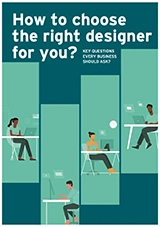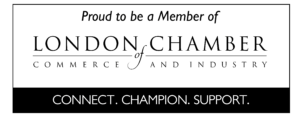The New Revolution: Business, Innovation & Design Thinking
On the back cover of my copy of Edward De Bono’s book Parallel Thinking it confidently states: Western thinking is failing because it was not designed to deal with change. Which begs the question of what we can do to counter this flaw in the way we are taught to think through our educative processes in the west?
Design Thinking
Innovation is almost always about finding a new way to do something which means embracing change. For example, a new way of organizing work can lead to extraordinary improvements as the birth of the factory and production lines showed.
In the 1980s Total Quality Management (TQM) was the new thing. It innovated by combining previously separate toolsets: kanban cards, quality circles, and when brought together led to new insights. One of those key insights was that people on ‘the shop floor’ could perform much higher-level work than they were generally asked to do.
In a recent seven-year study of 50 projects from a range of sectors, including business, health care, and social services, suggested that ‘design thinking’ had the potential to do for innovation exactly what TQM did for manufacturing. Unleashing people’s full creative energies, winning their commitment, and radically improving processes to boot.
Today, most senior executives have at least heard about the concept and potential impact of design-thinking tools: an emphasis on reframing problems and experimentation, ethnographic research, the creation and use of diverse teams to name but a few of the core tenants. But what most people do not fully comprehend is the subtle way design thinking circumvents our natural human biases and attachments to specific behavioural norms, that often block us from truly exercising our imagination.
Possibly on of the highest profile successes of design thinking is the British Olympic Cycling teams use of this technique. Small iterative advancements, testing, adaption and retesting in a continuously looped process led to huge improvements over time. Each small change alone may only deliver a fairly insignificant improvements – but collectively the compound effect was significant.
The intention of this article is to explore a variety of human tendencies that can hinder innovation and expand upon how the design thinking tools combined with defined process steps can help any team break free of self-imposed restraints.
But first let’s discuss why organisations need to innovate, what they desire innovation to deliver and why their efforts often fall short.
The Challenges of Innovation
A successful innovation process must deliver results in three areas. Superior solutions, lower risks balanced with costs of change, and thirdly, employee buy-in.
When trying to apply them, organizations frequently encounter new obstacles and face new trade-offs. Let’s look at them individually.
Superior solutions
Defining problems in the usual, conventional ways, often leads to the usual, conventional solutions. That seems pretty obvious, right? By asking more interesting questions we can help teams discover more insightful, unique and original ideas. There are however two inherent risks.
Some teams can get hung up exploring a problem, with endless research and investigation but not moving into the ‘solutions’ phase. While action-oriented teams can be impatient to find a resolution and so don’t take the time to figure out the correct question they should be addressing.
Solutions are always better when they incorporate user-driven criteria. Proper market research can help companies understand such criteria, but it must be acknowledged that it’s hard for customers to know that they want something that doesn’t yet exist.
Like the famous quote from Henry Ford alludes ‘If I’d asked people what they wanted, they’d have asked for faster horses.’ – the real art of market research is in probing beyond the obvious to uncover the hidden meanings that are buried just below the surface.
Additionally, allowing diverse voices to feed into the process is known to improve the effectiveness of the final solution. (NB. This can pose difficulties for anyone facilitating or managing this process, as diversity will bring opposing views and conversations can quickly deteriorate into heated debates, if not handled correctly).
Lower risks vs costs
Innovation means trying new ideas. Therefore, uncertainty is unavoidable. That’s why innovators always build a portfolio of options – testing and prototyping as they go. It’s a balancing act. Too many ideas dilute focus and drain resources. Too few and you will not gain the insights and data needed to make informed choices and improvements. There needs to be a willingness to drop ideas that are not performing well enough. A word of warning here though. In my experience, people often find it easier to kill off the more creative (and arguably riskier) ideas too early, not allowing the incremental gains of a process of testing and iteration the time needed to deliver.
Employee buy-in
Any innovation will struggle to succeed unless it receives full company ‘buy-in’. Far too often real innovation can be stopped in its tracks because there is a failure to get the employees on board. People do generally resist change unless they understand the reasons and intent. Any organisation wishing to foster a true culture of innovation needs to also be as transparent and communicative as possible.
The surest route to winning employee support is to involve them in the process, particularly the initial idea generation. Which naturally carries the danger that the involvement of many people can lead to incoherence. It’s the role of the process facilitators again to ensure everyone stays on track and focused on the final objective.
At the heart of these difficulties is a fundamental tension. In a stable environment, the best efficiency is achieved by removing variation. But when looking for innovation, variation can be your biggest ally – highlighting opportunities and opening new paths to success. The skill is in seeing and nurturing those possibilities. But, who can blame a divisional manager, faced with quarterly targets, for concentrating on efficiency, rationality, and centralised control?
To manage these tensions the best practice, seen in organisations that embrace innovation, is to create a structural process that addresses these obstacles and their counter-productive biases. One of the most widely used processes to do that is design thinking.
Structured to succeed
Design thinking is a structured process. Some designers complain that implementing design thinking can be too structured and linear and therefore rather slow. However, designers have been trained in this creative process and naturally use it in a more free-flowing way within their daily practices. We all fully aware, that when you know something so well that it becomes second nature, it can sometimes be hard to slow down and allow the time and space for others to fully participate.
Managers overseeing most organisations that are looking for innovation are rarely designers. Likewise, managers of innovation teams are often not designers either. They are generally not experienced in doing face-to-face research with customers, nor co-creating with stakeholders. Nor designing and executing experiments. But these are the tasks needed, so to allow the business people to feel more comfortable with the process, design thinking adopts a more familiar, linear structure that helps people adjust to these new practices and behaviours.
Kaaren Hanson, formerly the head of design innovation at Intuit and then becoming Facebook’s design product director, stated it like this: “Anytime you’re trying to change people’s behaviour, you need to start them off with a lot of structure, so they don’t have to think. A lot of what we do is habitual, and it’s hard to change those habits, but having very clear guardrails can help us.”
Slow down but follow a structured process
An organised process keeps people on track and curbs the tendency to expend too much time and energy exploring a problem – or impatiently skipping ahead. It also instils confidence. Most humans have been taught to fear making mistakes and so they focus on preventing errors rather than on seizing opportunities.
But we also all inherently know that it’s through our mistakes that we learn and improve. We know there can be no progress without taking a first step, no innovation without action and that trying something new might mean things don’t work out entirely as anticipated.
Given the need to embrace risk then a psychological safety net becomes essential. The props and tools of design thinking deliver that security, helping people move more assuredly through the discovery of customer needs, idea generation, and concept testing with clearly defined direction and purpose.
For most organisations, the application of design thinking involves seven key activities. Each step generates a clear output that feeds the next activity. Each step builds on the last until the organization arrives at an implementable innovation. But through this process, a greater transformation is also happening at a much deeper level — something that often the executives are not particularly aware of, the move to a less risk-averse culture where trying new ideas is supported. Although principally geared to understanding and moulding the experiences of customers, it’s not uncommon for design-thinking activities to reshape the innovators themselves.
Discovery process
Many of the best-known methods of the design-thinking discovery process relate to understanding what creates “a happy customer”, and what they feel is “a job well done”. The customer journey and pathways to customer satisfaction are fast becoming terms every business person is familiar with.
Adapted from the fields of sociology and ethnography, the discovery methods concentrate on examining what makes a meaningful and productive customer journey, which is generally explored through three sets of activities:
1. Immersion
Traditional, customer research has been a somewhat impersonal exercise. The expert reviews feedback from focus groups and surveys. If available they will consult data on current behaviour too – and then they will draw inferences and conclusions about customer needs. The better the data, the better the conclusions.
However, this can ground people in the already articulated needs that the data reflects. There is potential to see the data through the restrictive lens of our own biases and there is practically no way to recognise the needs that people have not expressed. (Remember Henry Ford and the faster horses’ quote!)
2. Shaping the Innovator’s Journey
What makes design thinking different is its ability to counteract our biases by joining in the full experience with the user.
Design thinking takes a different approach. It identifies hidden needs by having the researcher live the customer’s experience.
There are some famous psychological experiments where people have been deprived of one of their key senses (eg. sight or hearing, or both) in order to understand and experience the world as blind or deaf people do.
Men have been asked to wear pregnancy suits to appreciate the lived experience of their pregnant partners. There have even been race and gender swap experiments to test lived experiences – involving the skills of the movie industry prosthetics and make-up artists in a serious research equivalent of the Mrs Doubtfire film.
3. Sensemaking
Immersion in user experiences can provide vast amounts of raw data. But identifying patterns to make sense of the mass of qualitative data can be a daunting challenge.
It is common for the initial enthusiasm of ethnographic insights to fade away as non-designers become overwhelmed by the volume of information and the seeming messiness of searching for those incisive insights. Which is where the structure of design thinking really delivers. One of the most effective ways to make sense of the information generated by immersion research is a exercise called the Gallery Walk.
In the Gallery Walk the research team selects the key data gathered during the discovery process and writes it down on large pieces of paper positioned as posters on the wall. Sometimes these posters show individuals who have been interviewed, with their photos and quoting their personal perspectives.
Key stakeholders are then invited to tour this gallery and write down on Post-it notes the bits of data they consider essential. They then form small teams, and in a carefully orchestrated process, their Post-it observations are shared, combined, and sorted by theme into clusters that the group then further mines for additional insights.
This simple process helps to overcome the danger that people will be unduly influenced by their own biases. It makes the people who were interviewed vivid and real. It creates a common database and reference points – and so facilitates the collaborators’ ability to interact, form shared insights and challenge any potential of any individuals own biased perspectives unduly affecting results.
Final Alignment
The final stage in the discovery process is usually a series of workshops or seminar discussions that explore the question: If anything were possible, what would we wish to do better?
The focus is always on possibilities, rather than on any constraints of the present status quo. It helps diverse teams have more collaborative and creative discussions about the criteria and define the set of key features that an ideal innovation should incorporate.
Creating a spirit of inquiry and challenging ‘the norms’ highlights dissatisfaction with the present status quo. Further into the innovation process, when a portfolio of ideas is being honed, such agreements on the design criteria will give novel ideas a better fighting chance against the safer, less innovative ideas.
Idea Generation
Once we have a deep understanding of customers’ needs, we can move on to identify and hone down to specific solutions that conform to the criteria identified and the refining can begin.
Emergence
The first step is to create dialogue about potential solutions. Carefully planning what challenge will be explored, who will participate, and also how the conversation will be structured.
After using the design criteria to do some individual brainstorming, participants gather to share ideas and how to build on them creatively — as opposed to negotiating compromises and taking the easiest common denominator approach.
When working with a national charity, specialising in helping people live a fulfilling and active life whilst living with an incurable condition, the S2 Design Team adopted a design thinking approach to explore the charities present situation and see how they could innovate to enliven their relationship with their members.
After conducting member interviews, surveys and focus groups, interviews with clinical professionals, carers and other research, we could identify areas of concern and opportunities for innovation.
These ranged from member satisfaction issues and frustrations (primarily created by poor communications) to the need for verification by doctors known to the patients personally. The process also identified some concerns raised by medical professionals themselves about some of the advice and help programmes on offer.
By innovation and adaptation in four key areas, the organisation was able to revive its relationship with present members and also attract new members. Resulting in a large spike in registered users, improved living experiences for those users, and increased reputation and revenue for the charity.
Articulation
Emergence activities usually generate a number of competing ideas. Varying in both attractiveness and feasibility. Established managers are often bad at this phase due to behavioural biases, over-optimism, confirmation bias, and a fixation on first solutions or previous practices.
It’s crucial that assumptions are challenged, or any discussions around what will or won’t work regularly become deadlocked. People will often advocate from their understanding of how the world works and try to shut down discussions that don’t fit their understanding. .
Design thinking in many ways can be likened to how actors and comedians approach improvision sessions. The rule for improvisation is not to be negative. Don’t block an idea or direction thrown up by someone else. It’s encapsulated in the phrase “Yes, and”. You agree with the premise and try to grow or add to it.
Design thinking frames these discussions as an exploration of what would need to be true about the world for the particular idea to be feasible. (See “Management Is Much More Than a Science,” by Roger L. Martin and Tony Golsby-Smith, HBR, September–October 2017.)
At the end of the idea generation process, innovators will have a portfolio of well-considered, possibly unique, ideas. The assumptions underlying these ideas will have been carefully probed, and the conditions necessary for success will have been articulated and agreed as achievable. The process also means ideas will have the support of the team which usually translates to ownership, some excitement, and therefore, people who will take on the responsibility of bringing them to market.
The Testing Experience
Companies usually think of prototyping as the process of fine-tuning a product or service that has already largely been developed – the final tweaks and incremental changes.
In design thinking, prototyping is carried out early in the ideation process with far-from-finished products. This prototyping should be as fast and cheap as possible. The intent is to test, refine, iterate and repeat. This often means quite radical changes – even complete redesigns – can occur along the way. But better to identify any problems early, before too much investment, when you are able to adapt and improve without too much inconvenience.
Pre-experience
Neuroscience research indicates that to “pre-experience” something novel (ie. to vividly imagine) results in more accurate assessments of the value of the concept.
Design thinking calls for the creation of basic, low-cost models that will capture the essential features of the proposed concept. They are often much rougher than any “minimum viable products” which start-ups might test with customers. However, what these models lack in fidelity, they gain in flexibility, as they can easily be altered to respond to feedback. Their very nature – unfinished and incomplete, invites people to offer opinions.
Learning in action
Real-world experiments are essential in assessing new ideas, and identifying any changes needed to make them workable and improve the experience. But these tests also offer additional, less obvious value in that they help reduce both employees’ and customers’ resistance to change. Including them in the creation process, ‘of reimagining’ – means they join you on the journey to your new innovation.
Conclusion
The design-thinking structure creates a natural flow from research to rollout. Immersion in the customer experience provides data, which transforms into insights, which in turn enables teams to agree on the design criteria used as they brainstorm solutions.
All assumptions about what’s important to the success of those solutions are examined and tested. Rough prototypes help teams develop further insights, improvements and innovations.
The design-thinking process counteracts human biases that stifle creativity while also addressing the challenges typically faced in reaching superior solutions, reducing costs and risks, and engaging employee buy-in.
Design thinking recognises that any organisation is a collection of human beings who are motivated by different perspectives and emotions.
Design thinking, therefore, emphasizes engagement, dialogue, and learning by involving customers and other stakeholders in defining the problem, creating the parameters and developing a solution.
Design thinking encourages a broad acceptance of, and commitment to, embracing change. By creating a structure for any innovation process, design thinking helps teams collaborate and agree on what is essential to the outcome at every phase.
Adapted from source material by Leanne Liedtka, professor of business administration at the University of Virginia’s Darden School of Business.





